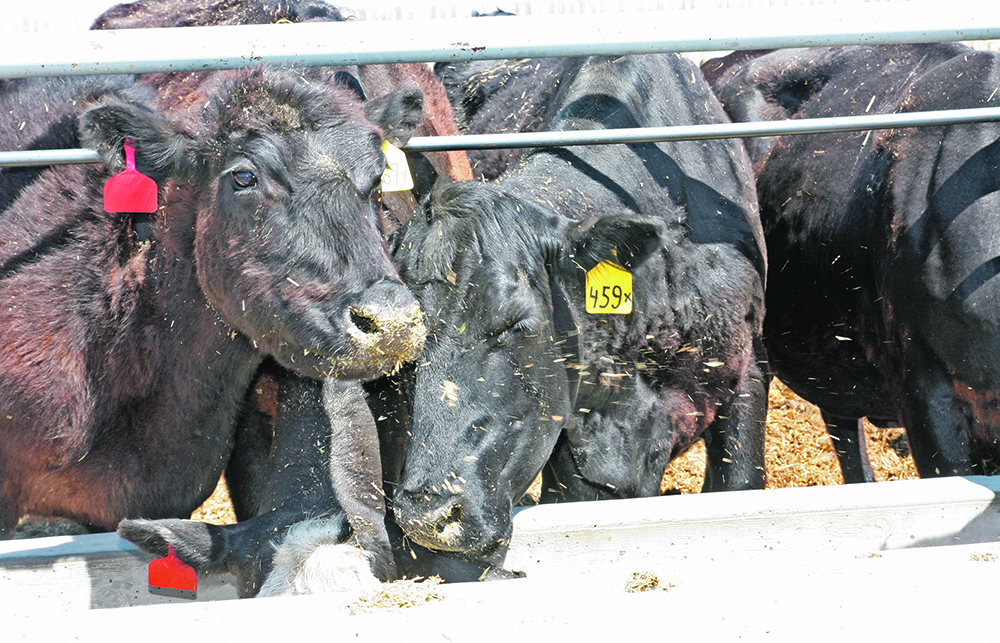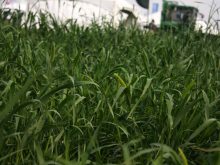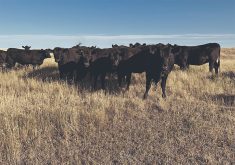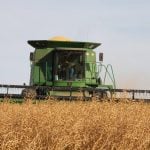Dry conditions squeeze grain availability, but experience from 2021’s drought has made moving corn into Alberta easy
Alberta feedlots are increasing imports of American corn to make up for the lack of local feed caused by the drought.
“There’s going to be a lack of barley and wheat for the feedlot,” says Jacob Bueckert, chair of the board of the Alberta Cattle Feeders’ Association. “Most of the feedlots are already purchasing corn out of the U.S.”
Bueckert is with Driland Feeders near Warner, Alta.
“We’re not as dry as some other places. We haven’t had much for rain this year,” he said. There’s little local dryland grain in the area because of the dry conditions and dryland corn silage yield is down about half.
Read Also

Canada told trade crisis solutions in its hands
Canadians and Canadian exporters need to accept that the old rules of trade are over, and open access to the U.S. market may also be over, says the chief financial correspondent for CTV News.
Bueckert usually buys about 100 tonnes per day of barley and feed wheat from farmers in his area to fill most of the needs for the feedlot, but he says he’ll only get about half of what he needs locally.
That means Driland and others in feedlot alley near Lethbridge are already booking corn and having it delivered from the United States.
The six million tonnes of corn imported to Canada in 2021-22 was double the amount of the previous year because of the 2021 drought in Western Canada.
The 2022-23 crop year, which runs until the end of August, saw a return to normal levels of corn imports, although still higher than the five-year average. Booked corn for the 2023-24 crop year already equals what was sold in 2022-23, says Bruce Burnett, director of weather and markets for MarketsFarm.
Bueckert says the experience of 2021 established relationships and routes for corn to move into Alberta and that has made increasing corn imports this summer relatively easy.
“The guys know how to import U.S. corn pretty easily now,” says Burnett.
Adds Bueckert: “Corn (seems) to be pretty available. … “I’m getting lots of calls on it, lots from brokers.”
Corn moved by rail arrives from the U.S. at local elevators, which have room because of the lower-than-expected local crop.
“Grain elevators, they’re in the business of moving grain. If they don’t have grain to move to the ports, they’ll bring in rail cars.”
Bueckert says it is convenient to book trucks and send them multiple times to a local elevator versus having them run further afield to pick up on-farm feed grains.
Most western feedlots prefer to feed barley and wheat rather than corn because they’re familiar with those grains, says Bueckert, and the long-time local systems are set up to feed those grains into feedlots.
Corn has been plentiful from the U.S., despite a U.S. crop that has seen continual declines in yield estimates this growing season because of unfavourable weather in the U.S. corn belt.
Burnett says there should be adequate American corn ending stocks of about two billion bushels, so corn will be available.
The drought was wider-reaching in 2021, says Bueckert, including into Montana, so western Canadian feedlots were competing with them for corn. That’s not the case this year, which means more corn is available.
Burnett says areas of cattle feeding concentration in the U.S., such as west Texas, Nebraska and Oklahoma, have all had recent rains and there should be outsized demand from those areas for corn grown in the rest of the country.
Straw for bedding is also expensive, running at $160 to $180 per tonne, whereas it would usually cost about $100 per tonne in the area, says Bueckert. There’s little of it from dryland crops and irrigated crop producers prefer to put it back onto the ground.
The costs are piling up for feedlots and the price of grain remains higher than the five-year average, says Bueckert.
“If it wasn’t for the corn, I don’t know what we’d pay, as there’s not enough grain to go around. Barley is extremely expensive already.”















